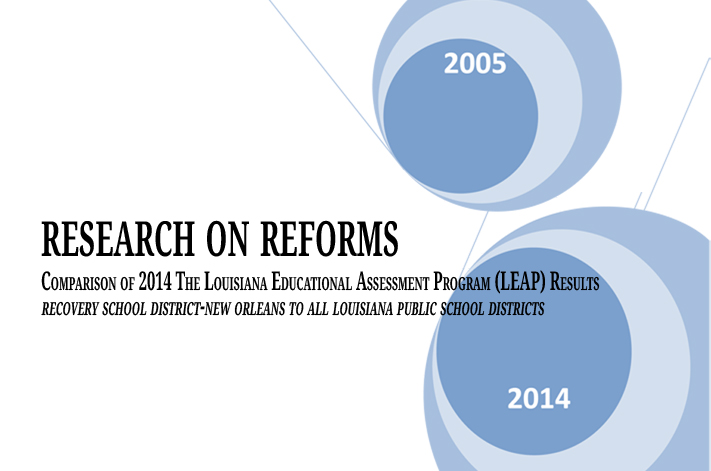Project Description
Most States Are Cutting Education
By Nicholas Johnson, Jeremy Koulish and Phil Oliff Updated February 10, 2009
The combination of rising unemployment, declining consumer spending, declining asset values, and foreclosures has led to declining state revenues. And the number of people in poverty is growing, adding costs to state budgets for programs such as Medicaid and social services.
Education is by far the largest component of state budgets. Some 46 percent of all state general fund expenditures is devoted to elementary, secondary, and higher education.
Nearly all states are required to balance their general fund budgets. When large budget deficits develop, education often is cut deeply.
- States Continue to Feel Recession’s Impact
- State Revenues Plummet
- Policy Points: Recession Still Causing Trouble for States
- An Update on State Budget Cuts
Note: Please see Most States are Imposing Cuts that Hurt Vulnerable Residents, for updated information about education cuts in state budgets.
The following details cuts in education funding and programs that states have made as they enacted their fiscal year 2009 budgets, additional cuts as they faced mid-year deficits, and cuts that have been proposed for the upcoming fiscal year.
K-12 Education and Other Childhood Education Programs
At least 20 states have implemented cuts to K-12 education. At least six additional states are proposing such cuts.
The implemented cuts include the following:
- Florida has cut aid to local school districts for the current year by $140 per pupil.
- South Carolina has cut per-pupil funding by $95 in the current year. Maine has cut K-12 funding about $140 per pupil; this comes on top of education cuts earlier this year that were targeted to reduce specific programs.
- Georgia has cut aid to local school districts and the state’s governor has proposed additional cuts. Under the governor’s proposal per pupil cuts would amount to $115 per pupil for the current fiscal year, and $189 per pupil for the coming fiscal year.
- California is reducing basic K-12 education aid to local school districts. It also is cutting a variety of other programs, such as adult literacy instruction. For Fiscal Year 2009-10 California’s governor has proposed delaying payments to school districts, allowing school districts to shorten the school year by up to five days, and reducing funding for some grants and programs aimed at helping high needs students.
- Kansas has been delaying payments to school districts.
- Maryland cut funding for a school breakfast pilot program, professional development for principals and educators, health clinics, gifted and talented summer centers, and math and science initiatives. For the coming fiscal year, Maryland’s governor has proposed cutting direct aid to local school districts by $69 million.
- Massachusetts enacted cuts to Head Start, universal pre-kindergarten programs, and early intervention services to help special-need children develop appropriately and be ready for school. Funding for K-12 has also been reduced, including spending for mentoring, teacher training, reimbursements for special education residential schools, services for disabled students, and programs for gifted and talented students.
- In Nevada, the governor has ordered various cuts to K-12 education, including delaying an all-day kindergarten expansion, cutting per pupil expenditures by $400 in a pilot program, eliminating funds for gifted and talented programs, eliminating funds for a magnet program for students who are deaf or hard of hearing, and making across-the-board cuts. Additionally, young children with developmental delays will lose more than 15,000 hours of needed services.
- Rhode Island has frozen state aid for K-12 education at last year’s levels in nominal terms and reduced the number of children who can be served by Head Start and similar services by more than 550.
- State education grants to school districts for the current fiscal year have also been cut in Alabama, Connecticut, Delaware, Iowa, Kentucky, Mississippi, Ohio, Oregon, Utah and Virginia.
Additional proposed cuts for the coming year include the following:
- Colorado’s governor has proposed suspending a number of educational programs in the current fiscal year, and cutting K-12 funding for FY 2010 by almost 4 percent.
- Idaho’s governor has proposed cutting general fund spending for public schools by 5 percent in FY 2010 relative to the state’s FY 2009 appropriation.
- Nebraska’s governor proposes providing school districts with 7 percent less funding for the coming two-year budget period than they are slated to receive under the state’s education funding formula.
- The New York governor proposes nearly $2 billion in cuts in education funding in FY 2010. Reductions in aid to individual school districts would range between 3 percent and 13 percent. In addition, a number of specific programs are eliminated, including supplemental math/science programs and new-teacher mentoring programs.
- South Carolina’s Governor proposes suspending funding for textbook purchases in FY 2010.
- Washington’s governor has proposed reducing by one-third the amount the state spends to supplement education funding in property poor school districts. This proposal is likely to widen the gap in education funding between wealthy and poor districts.
- Governors in Kansas, New Mexico, Nevada and Virginia have also proposed cuts affecting K-12 education in FY 2010.
Colleges and Universities
At least 28 states have implemented cuts to public colleges and universities and/or large increases in college tuition to make up for insufficient state funding. Cuts are proposed in four additional states.
- Arizona State University plans to address its loss of state funds by holding vacant or laying off 150 to 200 faculty associates, requiring employees to take off an average of three weeks without pay, boosting class size, and reducing enrollment in its nursing school by 5 percent to 10 percent. Tuition in Arizona this year rose 9.5 percent in response to funding cuts.
- In Florida, university budgets and community-college funding were cut. The University of Florida has announced it will eliminate 430 faculty and staff positions and decrease funding for disability services, financial aid services and internship opportunities. Student enrollment is declining by more than 1,000 students at both Florida State University and the University of Florida. The legislature approved a statewide tuition increase for the current academic year of 6 percent; the University of Florida increased tuition for in-state undergraduates by 15 percent.
- In Kentucky, state budget cuts to colleges and universities of about 3 percent led to in-state tuition hikes of 5.2 percent at the Kentucky Community and Technical College System. The Council on Postsecondary Education has also approved in-state tuition increases for universities across the state from 6.1 percent (Murray State University) to 9 percent (University of Kentucky and University of Louisville). Additionally, the University of Kentucky has announced 188 faculty and staff positions would be eliminated.
- New York has enacted tuition increases for this year and next year. Resident undergraduate tuition will increase a total of 14 percent by the 2009-10 academic year.
- When the state of Rhode Island cut higher education funding last year, the University of Rhode Island, Rhode Island College, and the Community College of Rhode Island all increased tuition for the current academic year. Each of these institutions now has gone one step further by increasing tuition further mid-year, by 6.7 percent, 8.2 percent, and 4.3 percent respectively.
Following cuts to state university budgets, tuition increases for the current academic year were announced in:
- Alabama (13 percent), Maine (10 percent), New Jersey (4 percent to 9 percent), Oklahoma (9 percent to 10 percent), South Carolina (6 percent), Tennessee (6 percent) and Virginia (average increase of 7.3 percent when fees are included). California is raising in-state tuition for 2009-10 by 7.4 percent to 10 percent as part of its October budget deal, and in December the governor called for additional tuition increases of 9 to 13 percent for some institutions.
Other states making cuts in higher education operating funding include Connecticut, Georgia, Idaho, Iowa, Louisiana, Maryland, Massachusetts, Minnesota, Mississippi, Nevada, North Carolina, Pennsylvania, Utah,, and Vermont.
- Governors in span style=”font-size:100%;color: #54770f;”>Georgia, Idaho, Mississippi, Massachusetts, Minnesota, Nevada, Pennsylvania, South Carolina and Virginia have proposed additional higher education cuts in their budgets for fiscal year 2010. Some of these cuts are quite large. For example:
- Nevada’s governor proposed cutting funding for state universities and colleges by 36 percent compared to the state’s prior budget.
- Virginia’s governor has proposed cutting funding for four-year state colleges and universities by 15 percent.
- South Carolina’s governor recommended that the state begin phasing out three two-year college campuses.
- The governors in Kansas and Colorado have proposed cutting higher education funding in both the current fiscal year, and the next fiscal year. Universities in Kansas have already begun making cuts in anticipation of a reduction in state funding.
For the upcoming year, higher education cuts are also proposed in Indiana, New Mexico, and Washington.
States Need Help to Avoid These Cuts
State deficits over the next two and a half years are likely to total more than $350 billion. Local governments face additional shortfalls. With education accounting for such a large share of state general fund budgets, it is difficult for states to avoid these types of damaging cuts — which will only get deeper as the recession continues. The economic recovery legislation passed by the House (and, to a lesser extent, the version passed by the Senate) would reduce the extent of such cuts.











